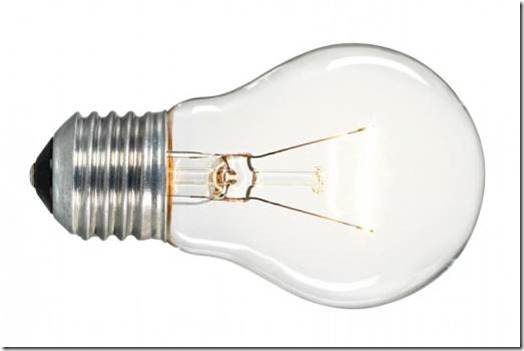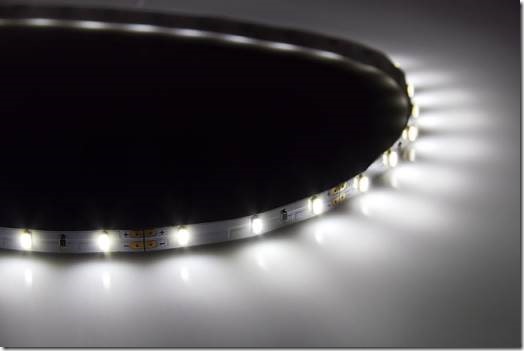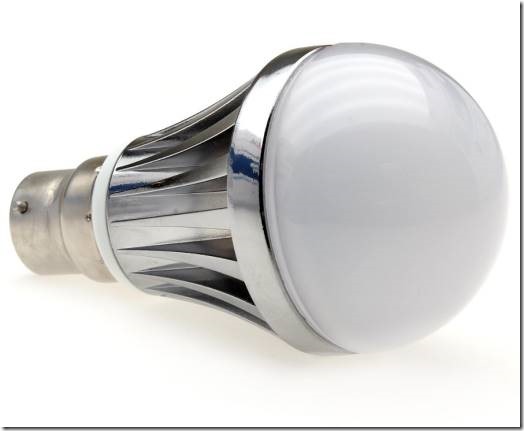The story below is from 2009. A more recent one (January 2016), which has generated renewed interest in the subject, suggests that scientists have found a way to make the old-style bulb more energy efficient (better than LEDs). I should point out – since the Daily Mail skims over it – that it is only “proof of concept”. Such bulbs are not being manufactured yet, and I would suggest that they are years away – and they may not even make it to market. For one thing, they will still “burn out”, whereas LED bulbs don’t.

The Daily Mail has outdone itself – and that’s really saying something where this middle-class rag is concerned. The humble incandescent light bulb has been around for nearly 200 years (or 130 years if you believe that Thomas Edison invented them first). It’s a long time by any standard.
The typical filament-based light bulb is extremely inefficient – most of the energy used to power it is wasted as heat, and they don’t last very long. The 40 watt bulb my desk lamp used to take typically lasts a couple of months before I hear the familiar ‘plink’ when I try to turn it on. However, the fluorescent energy-saving bulb I switched to had been in for almost a year and no problems at all. Of course, fluorescent bulbs only use around a fifth of the energy that an incandescent one needs to get the same light output.
The EU has determined that incandescent bulbs will be phased out by 2012, and the UK has targeted 2011 – by which time retailers will only be offering energy-saving versions to customers. The move would save something like $12bn (£8bn) a year throughout the EU , and cut down massively on greenhouse gas emissions.
The problem here is the term ‘ EU ‘. You see, any time the letters ‘e’ and ‘u’ appear next to each other in that order is guaranteed to turn the Mail’s hacks apoplectic with rage. This is then quickly followed by a Zimmer frame frenzy as the Mail’s Tory-voting readers jump on the bandwagon. This light bulb situation is a prime example. I mean, how dare those damned Johnny Foreigners try and tell we True Brits what to do? This is the Mail’s approach to just about everything: oppose Europe, and blame Europe. For everything (after you’ve blamed Tony Blair (yes, even after all this time), the Labour party, and anyone or anything else you don’t like) . It’s one reason why we’re still bloody well stuck with an antiquated weights and measures fiasco, when the Metric System is sitting there just begging to be used. It’s also why we’re not in the Euro (€) like we should be.
But anyway, the Mail published the story back in 2009 and said it had bought something like 50,000 of these bulbs to give away to punters. It has changed its tune a bit the next day due to being overwhelmed by middle-class morons anxious for a freebie and has had to limit its offer.
But never one to give up on an anti-Europe crusade, the Mail then embarked on a crusade against energy-saving bulbs (a further push was made in the print version of the paper).
To be honest, fluorescent bulbs are not the future. LED is the way to go.

Maplin Electronics (or loads of sellers on eBay) sell a range of flexible, high-brightness LED strips . I’m using one right now to light my computer desk – they operate off 12V and have a power consumption of about 2.5W (that’s less than a quarter of what a fluorescent bulb needs). And they have a lifetime of 100,000+ hours ( over 11 years ) continuous operation.

You can also buy LED bulbs with a standard screw or bayonet fitting to run from a standard light socket. When I wrote this article back in 2009 they were still quite expensive – something like £25 each – but I predicted that the price would fall. As of January 2016 you can pick them up for little more than £3 and considering that each will last for perhaps 50 years if run for 6 hours a day I don’t think that this is a bad price.
As I mentioned at the start of this updated article, scientists in America have produced incandescent bulbs in the lab which are more efficient than LED ones. It strikes me as an odd thing to do – it’s like trying to make a steam engine fly in spite of all the drawbacks associated with steam engines!
Incandescent bulbs have more issues than just being inefficient. They’re fragile, and the filament gets very hot so it inevitably burns out. From what I have read, I would expect the modified bulbs to burn out even quicker.